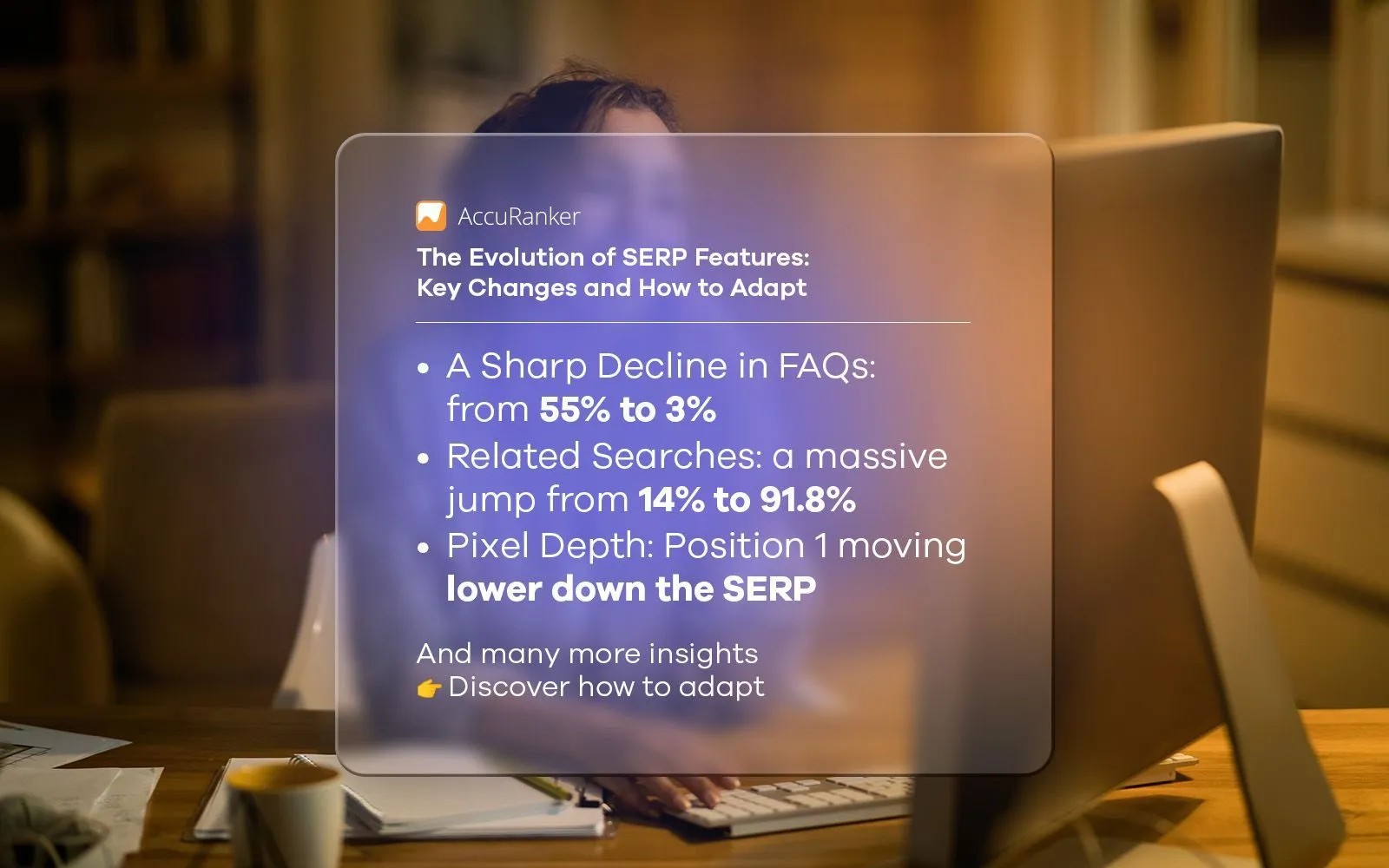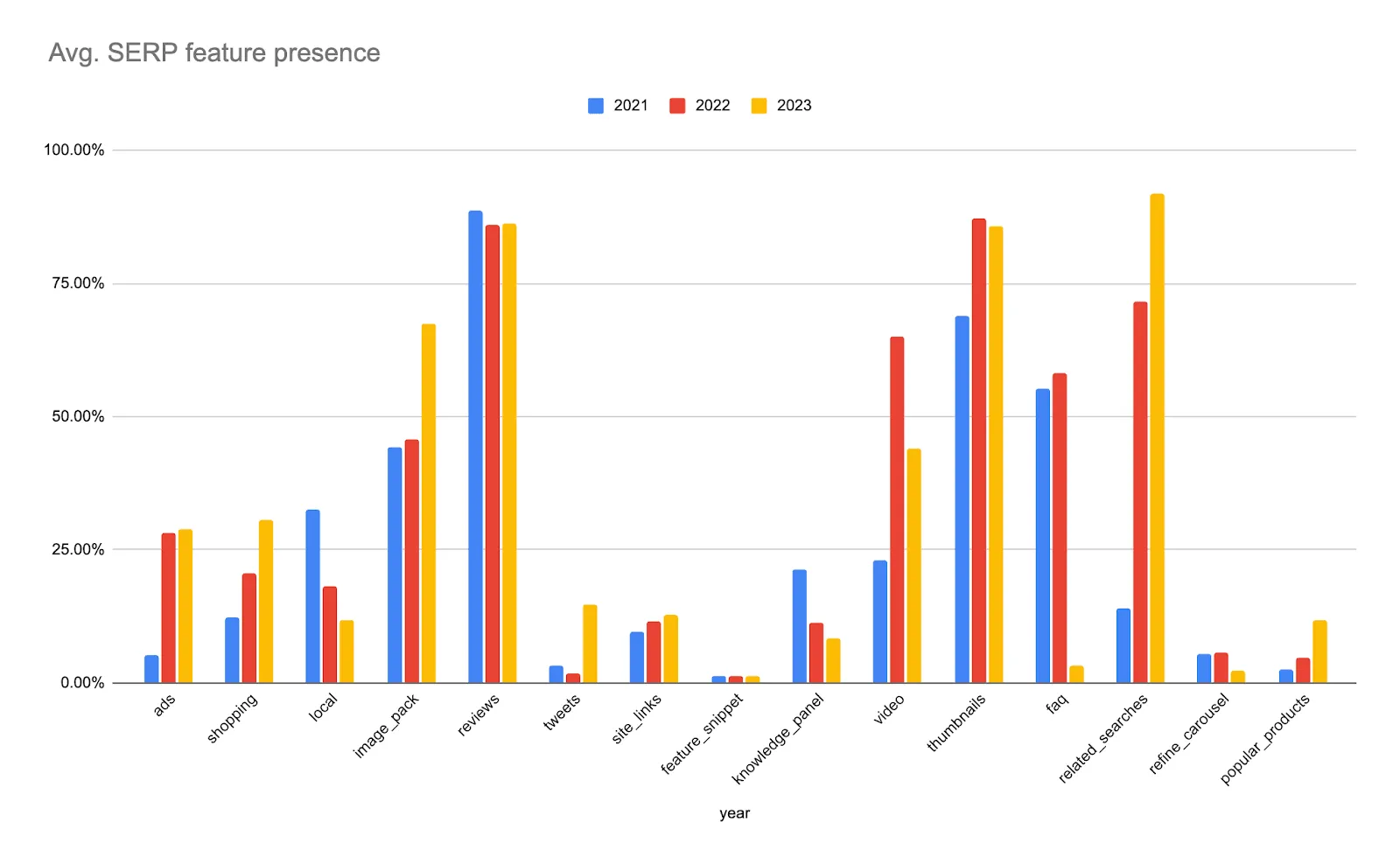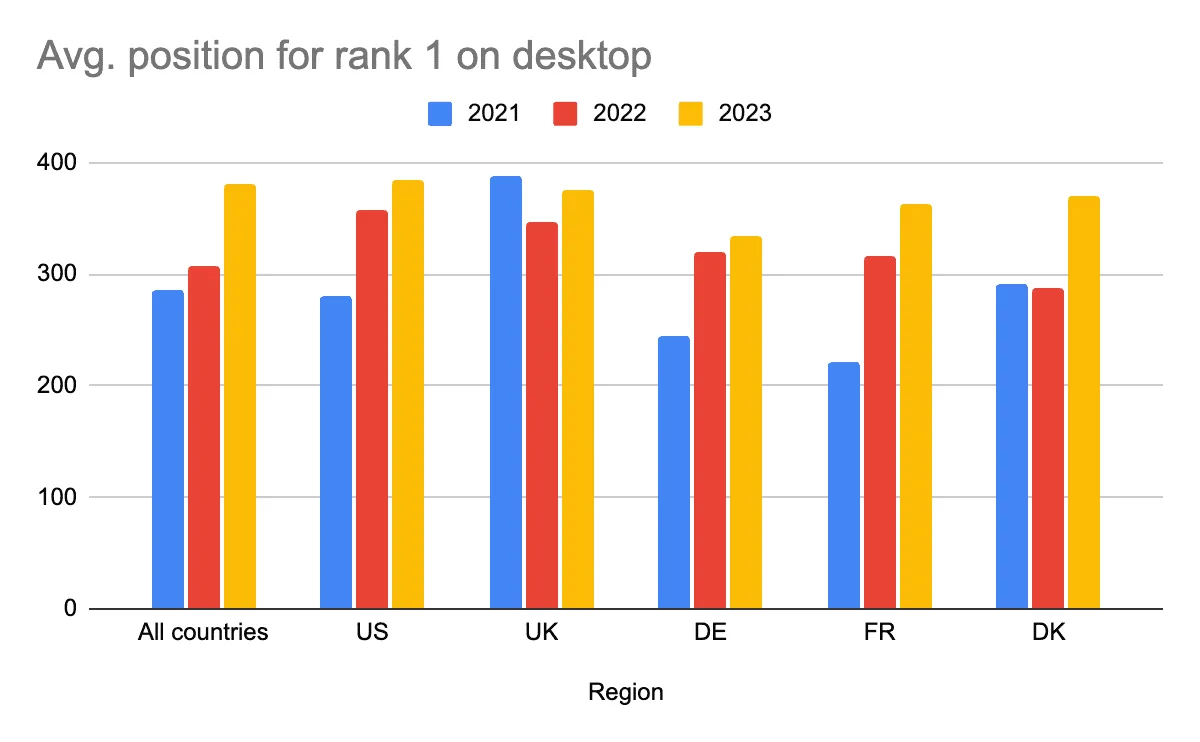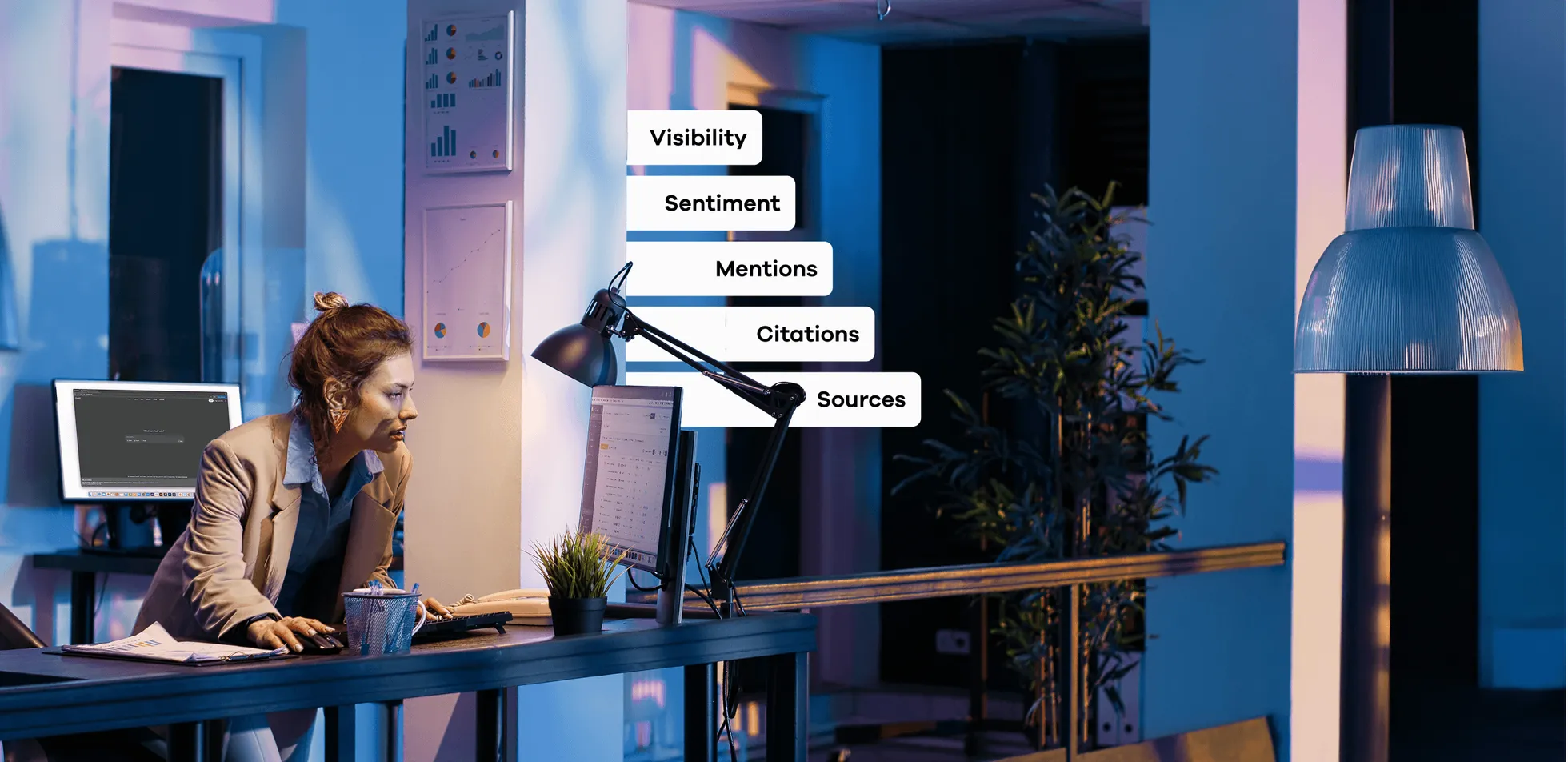
The Evolution of SERP Features: Key Changes And How to Adapt

Guy Swanborough
November 26, 2024
The Evolution of SERP Features: Key Changes And How to Adapt
Over the past few years, the way people interact with search engines has changed significantly. As more businesses flock online, competition for visibility has intensified, and search engine results pages (SERPs) have evolved to meet the demand for more dynamic, visually engaging, and direct answers. One of the most notable shifts in SERPs since 2021 has been the dramatic increase in search engine result features.
Using data from AccuRanker's vast database of 1.8 billion tracked keywords, we've seen remarkable changes in the landscape of these SERP features, especially around key shopping periods like Black Friday and Christmas holidays. With features such as ads, shopping listings, image packs, and related searches rising sharply, brands and marketers have had to adapt quickly. Meanwhile, traditional features like FAQs and site links have either stabilized or decreased in prominence.
This article will explore these trends in detail, highlighting how the use of various SERP features has changed and how businesses can leverage these shifts to stay competitive in an increasingly crowded digital marketplace.

The Surge of Ads (PPC) Listings: From 5.3% to 28%
Pay-per-click (PPC) ads have always been a cornerstone of online marketing, but their prevalence on SERPs has exploded, particularly around high-traffic shopping events like Black Friday. According to data from AccuRanker, the percentage of tracked keywords showing ad listings has increased from 5.3% in 2021 to a whopping 28% by 2023.
This rise can be attributed to increased com
petition as businesses focus heavily on capturing consumer attention during peak shopping periods. More companies are investing in paid search strategies to boost their visibility, especially when organic rankings are becoming harder to achieve due to the growing dominance of SERP features like image packs and product carousels.
For marketers, this trend highlights the importance of incorporating paid advertising as a critical component of their search strategy, especially when organic visibility is increasingly fragmented across various features.
The Boom in Shopping Listings: From 12% to 30%
In parallel with the growth in PPC ads, shopping listings on Google have also experienced a remarkable jump, growing from 12% in 2021 to 30% in 2023. This spike in shopping listings demonstrates the increasing importance of e-commerce in online search behavior, especially as consumers shift more of their shopping online during peak periods like Black Friday and Christmas.
The integration of shopping listings in SERPs, often accompanied by product images, prices, and retailer names, allows consumers to find what they're looking for quickly. Google Merchant Center and Product Listing Ads (PLAs) have become more prominent as online shopping surges, driven by the pandemic-induced shift toward e-commerce. This trend will likely continue as more retailers invest in optimizing their product data for search engines.
The Sharp Decline in FAQs: From 55% to 3%
One of the most surprising trends in the SERP landscape has been the sharp drop in FAQ features. In 2021, 55% of tracked keywords returned FAQ boxes in search results, but by 2023, this number had plummeted to just 3%.
The decline in FAQs may be due to Google's evolving algorithms, which have begun prioritizing more visually engaging or interactive content such as images, videos, and shopping carousels. The decrease could also reflect a shift in user preferences, as users may be finding the answers they need from other features like Featured Snippets or directly within the content of web pages.
For businesses that once relied heavily on FAQ optimization, this trend suggests a need to pivot toward other types of content creation, such as rich media, to maintain visibility on SERPs.
Reviews: A Consistent 87%
Despite the fluctuations in other SERP features, reviews have remained a steadfast presence on search engine results, consistently appearing on 87% of tracked keywords. Reviews are crucial to consumers, particularly when shopping online, as they provide social proof and help build trust in products and services.
The high consistency of review features in SERPs highlights the value Google places on user-generated content and peer feedback. Whether it’s star ratings for products, services, or local businesses, reviews continue to be a key driver in influencing consumer purchasing decisions. For businesses, managing and encouraging positive reviews remains a critical part of their SEO and digital marketing strategy.
Site links: A Steady Increase from 9.5% to 12%
Sitelinks are another SERP feature that has seen a modest but steady increase in prominence, growing from 9.5% of tracked keywords in 2021 to 12% by 2023. These links, which appear below the main search result, provide users with deeper navigation into a website, making it easier for them to find specific content or pages.
The slow but consistent growth of site links suggests that Google continues to value this feature as a way to improve user experience by directing searchers to relevant sections of a website. For brands, optimizing their website’s structure to include clear navigation paths can help them benefit from site link visibility.
Image Packs: A Leap from 44% to 67%
Perhaps one of the most notable increases is the rise of image packs, which have jumped from appearing on 44% of tracked keywords in 2021 to 67% by 2023. The popularity of visual search has been growing steadily, and this increase reflects users' growing preference for more visually engaging content, especially in product-related searches or queries requiring visual representation.
Image packs provide users with an immediate, eye-catching display of relevant images at the top of search results, often leading to high engagement rates. For businesses, optimizing images with appropriate alt text, file names, and structured data can significantly boost their chances of appearing in image packs, which is critical during highly visual shopping seasons like Black Friday and Christmas.
The Rise of Popular Products: From 2.7% to 11.9%
The Popular Products feature has also seen significant growth, increasing from 2.7% to 11.9% of tracked keywords over the past few years. This feature showcases trending products from various retailers, allowing users to browse directly from the SERP without needing to click through to multiple sites.
The rise of Popular Products is another indicator of the growing importance of e-commerce and product discovery in search behavior. For businesses, this presents an opportunity to optimize their product data feeds and leverage platforms like Google Merchant Center to ensure their products are featured in this highly visible SERP feature.
Related Searches: A Massive Jump from 14% to 91.8%
Perhaps the most staggering increase has been in the Related Searches feature, which has surged from appearing on 14% of tracked keywords in 2021 to an overwhelming 91.8% in 2023. This feature provides users with additional query suggestions related to their original search, helping them refine or expand their search journey.
The exponential growth of related searches highlights the evolving nature of search behavior, as users are increasingly seeking more context or alternative search pathways to find the information or products they need. This feature is particularly useful for guiding users through their search experience, allowing them to discover new products or information they may not have originally considered.
Pixel Depth: Position 1 moving lower down the SERP
A hidden SERP feature that AccuRanker has been tracking for a few years, is the pixel depth for SERP listings. Across our database of rankings used for this study, we also look at the average pixel depth for the position 1 organic search listings, and they are slowly dropping further down the SERP with time as more and more additional features are being added on desktop.
Across all countries, desktop rank 1 has moved nearly 100 pixels further down, from 285px to 380px from 2021 to 2023

Thankfully, mobile devices are not privy to the same trend, likely because many of modern SERP features are less intuitive for users on mobile devices, resulting in a decrease of pixel depth over time (from 389px to 371px). But it must be noted that pixel depth was way higher than desktop even back in 2021.
What These Trends Mean for Businesses
The explosion of SERP features since 2021 signals a critical shift in how Google and other search engines prioritize content for users. Features like PPC ads, shopping listings, and image packs have become increasingly dominant, reshaping the competitive landscape for businesses that rely on search traffic.
For companies aiming to maintain or improve their search visibility, these trends offer valuable insights into where to focus their efforts. For example:
- Paid search strategies (PPC) should become a priority, particularly during peak competitive shopping seasons. Directing more budget towards sale / offer pages over non-sale pages during this period so that your business can compete with others on discounted items.
- E-commerce optimization is crucial, as shopping listings and Popular Products become more prevalent. Ensuring all your (most popular) products pages satisfy the quality score for paid ads, as well as marking all up the key product schema around price, availability, offer price, reviews, images etc, so that this information is pulled into the shopping carousel / merchant centre listings and encourage click-through from users.
- Visual content such as images and product photos must be carefully optimized to take advantage of the growing prominence of image packs. As above, apart from the standard alt-tags and size optimizations, but also the necessary schema.
- Related searches have seen a soaring increase during this peak consumer period, so optimising for (and tracking) your mid-to-long tail keywords becomes ever more important, as research suggests as users get closer to translation of a product, their search queries become more and more refined. Think black mens jeans (informational) versus black levis 501 jeans size 34 (transactional).
- Businesses should continue to encourage customer reviews, which remain consistently important for building trust and driving conversions. Optimizing for sitelinks and keeping an eye on related searches can further enhance visibility and engagement.
Conclusion
The SERP landscape is changing rapidly, and businesses must adapt to the evolving features that are capturing user attention. The data from AccuRanker shows that over the past four years, features like PPC ads, shopping listings, image packs, and related searches have significantly grown in prevalence, while traditional features like FAQs have sharply declined.
To stay ahead in the search game, businesses need to diversify their SEO strategies, focusing on both paid and organic opportunities, and ensure they are optimizing for the SERP features that are most relevant to their audience. With these insights, companies can navigate the complex and competitive world of search and continue to thrive in an ever-evolving digital marketplace.
Related blog posts

5 LLM Visibility Metrics You Should Track in 2026
SEO is now both about ranking in search engines and being visible in LLMs. We give you five visibility metrics every SEO should track in 2026.
3 December 2025Is LLM Tracking Relevant for You?
LLM tracking is not just for SEOs. It is also relevant for content teams, agencies, marketing leadership, and communication teams. Learn why here.
26 November 2025
How to Find the Best Prompts to Track for AI Visibility
Do you want to start tracking prompts to optimize your AI visibility? We give you seven practical ways to identify relevant prompts to track in LLMs.
9 November 2025
